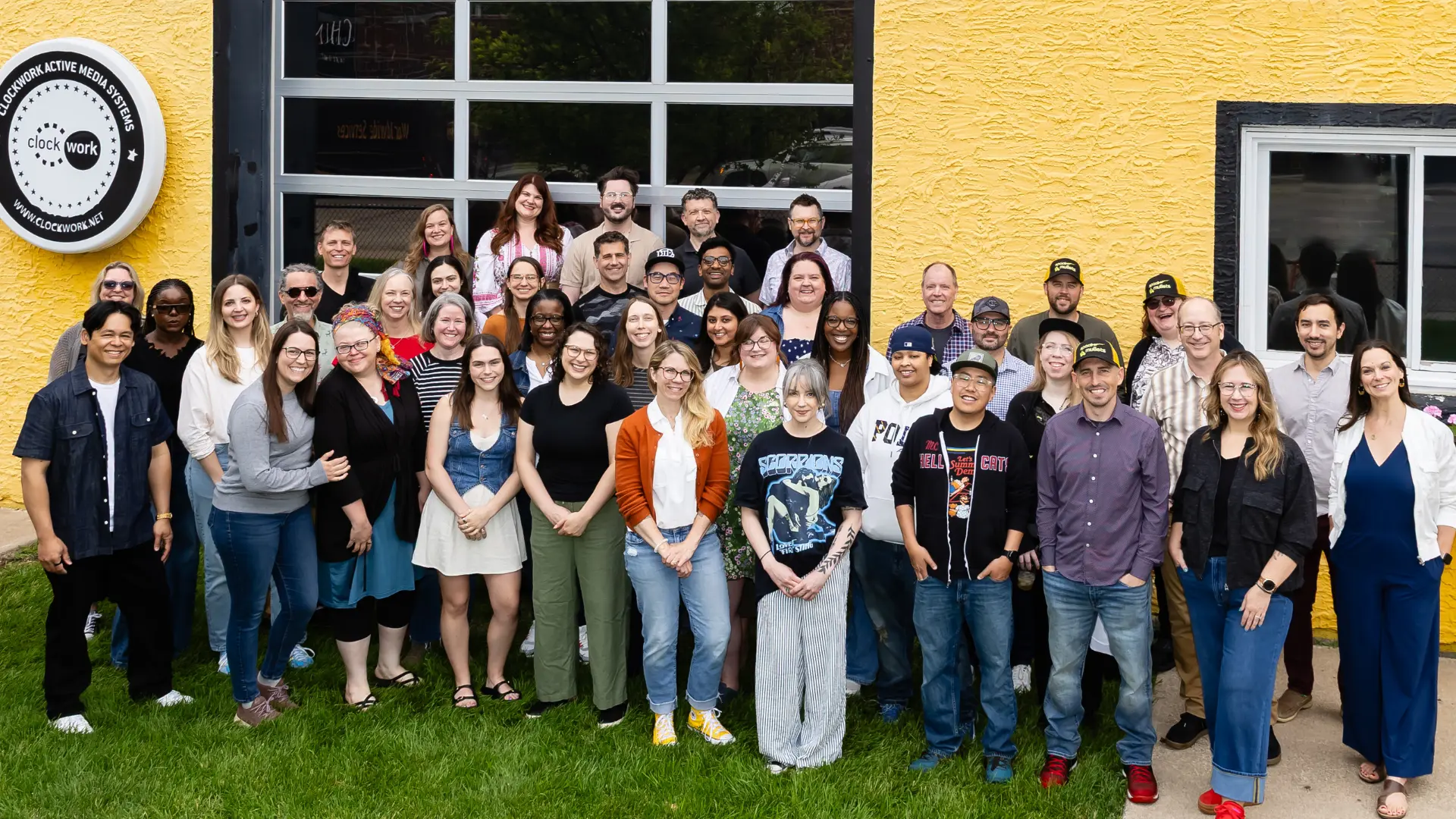The digital industry is always evolving, so how we work with businesses is also constantly changing. It is pretty hard these days to think or talk about “digital” and think it only means a website or an app. It’s everything now. Digital solutions are the way back-end operational systems integrate to powerful front-end customer experiences; they create seamless transitions between online interactions and in-person relationships; they are both the front door and the foundational infrastructure of a business.
There are endless digital possibilities and opportunities for all businesses these days. Digital solutions are now the web (pun intended) that power the way businesses work and what determines their success.
We talked with Jenny Holman, one of our Account Directors, to see what she’s hearing from clients.
What is the biggest change you’re seeing in how we’re working with clients?
Overall, one-off projects are becoming fewer and far between. But we’re also seeing the “Agency of Record” (AOR) concept changing, too. In particular, that relationship was based on an advertising or creative model that gives the associated agency a lot of creative control and ownership of (and responsibility for) ideas. Both the one-off and AOR types of partnerships are still happening, of course, but as clients and teams develop their own capabilities and insights after years of doing digital, we’re seeing the opportunity for new types of collaborations.
What do these new collaborations look like?
First, we’re developing product strategies and designing product experiences.
More and more, product companies are coming to us to build their product and optimize how they’re communicating that product out into the world.
We’re experts in user interface design, so they come to us to improve how they connect with their end user. They might have designers or developers making their own products, but doing that requires an entirely different approach than the thinking that’s needed to design and develop software. For example, a company that makes cellphone parts has a lot of product-specific designers and technicians on staff. But that doesn’t mean those talented people can or should design the portal that engineers use to build phones from the company’s parts.
We’ve also had software clients come to us because the software product they’re building doesn’t quite cut it from an Interaction Design standpoint. Their back-end is rock solid, but their users aren’t getting the experience they deserve (or that will make the company more successful).
That’s where our “100% digital” approach really complements teams. Clients needing software expertise can’t just go to a digital marketing agency that builds websites. They need a partner that understands what the end user wants to do and how to design it, whether it’s a platform that integrates with their legacy business systems or a product that seamlessly integrates into a user’s workflow.
Secondly, we’re coming in as innovation partners.
Companies know that they have to keep looking forward and getting better even when they are already at the top of their game. Any company can get dethroned at any time if they sit still; we see it all the time when businesses and industries are “disrupted” by new innovations.
Businesses are now coming to us saying, “Business is great, but what new business could we get that we aren’t seeing?” They want new clients and new customers and in order to do that, they have to continually grow.
Innovation from inside is hard, and often doesn’t work. Cultures, “the way things have always been done,” and hierarchy often get in the way. We bring a new perspective to keep ideating and innovating — we develop prototypes, proof-of-concepts, and user testing while the company keeps focus on the existing business.
Lastly, we’re finally seeing problems that systems thinking and big infrastructure can solve.
It used to be that technology happened in silos. Marketing over here, fulfillment over here, HR over here. Clients now know that having fractured internal systems creates problems and missed opportunities.
We get to come in and find ways to ensure their solutions are future-focused and integrate with their existing legacy systems. If their parts don’t work together, their whole — the business — can’t work very well either. And going back to the original introduction point — digital powers everything now, so the integration points are more numerous and complicated now than ever before.
Fixing these big technology problems has only a fraction to do with technology. Most of it has to do with thinking and problem solving. It requires an understanding of business and technology far beyond the thinking that goes into websites and apps (which are still great! Just different.). IT teams are often so focused on keeping the lights on that they don’t have to time to think about the long game. So we come in, stay out of the weeds, and architect big solutions.
“Digital” isn’t so new anymore. What do you see in the next phase of our industry?
A few things come to mind. First, everyone now knows that how a business shows up online directly impacts their reputation. Their reputation is tied to every digital touchpoint and every micro-experience a customer — or potential customer — has. Almost all business are now digital businesses and that has changed the way they see and plan for the next 10 years. They know they have to move, to pay attention, and to think about their business in a much more holistic way than before.
Also, a lot of companies are tired of carrying a huge technical debt. Across industries and sectors, organizations are doubling down on digital investments in order to pay that off. They’re often managing outdated, legacy systems because technology has moved faster than their businesses or they’ve patch-worked technology solutions together over the years. It’s more commonplace than most people think. Many companies struggle with a complicated mess under their hoods. And transforming into an organization with an efficient, sustainable infrastructure is on people’s minds.
One of the things I’m most excited about is that companies now know that they deserve and can demand a positive experience from a digital partnership. Their tech knowledge and departments have grown, so there is more balance between us (the agency) and clients. They’re demanding a good experience for themselves in finding technology solutions. They are done working with experts who can’t explain things well or with teams who are into flashy gadgets more than business objectives. This means nothing but better and better digital experiences for everyone.




